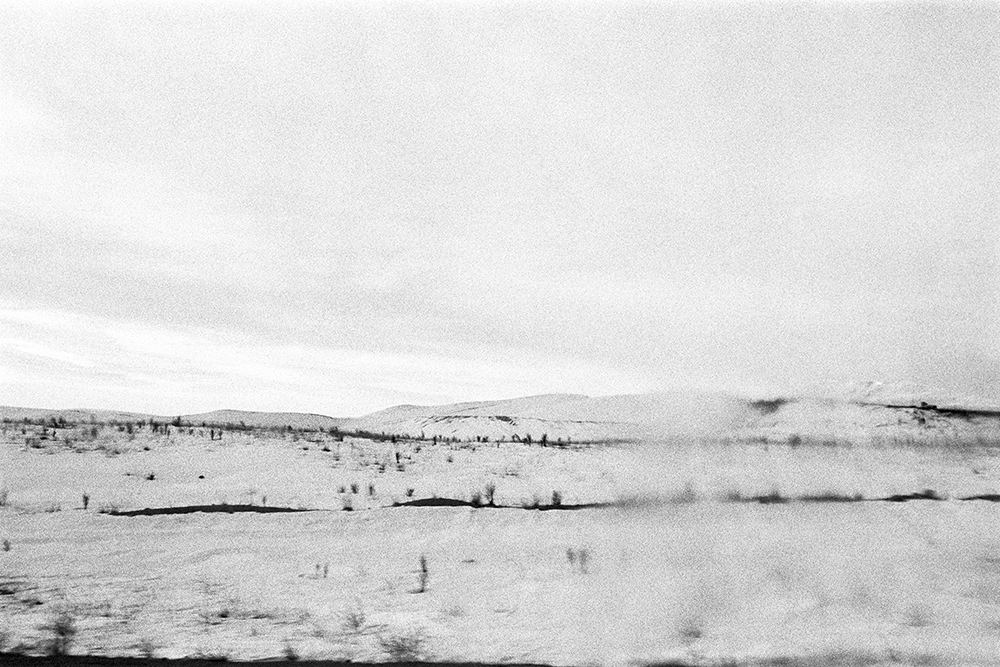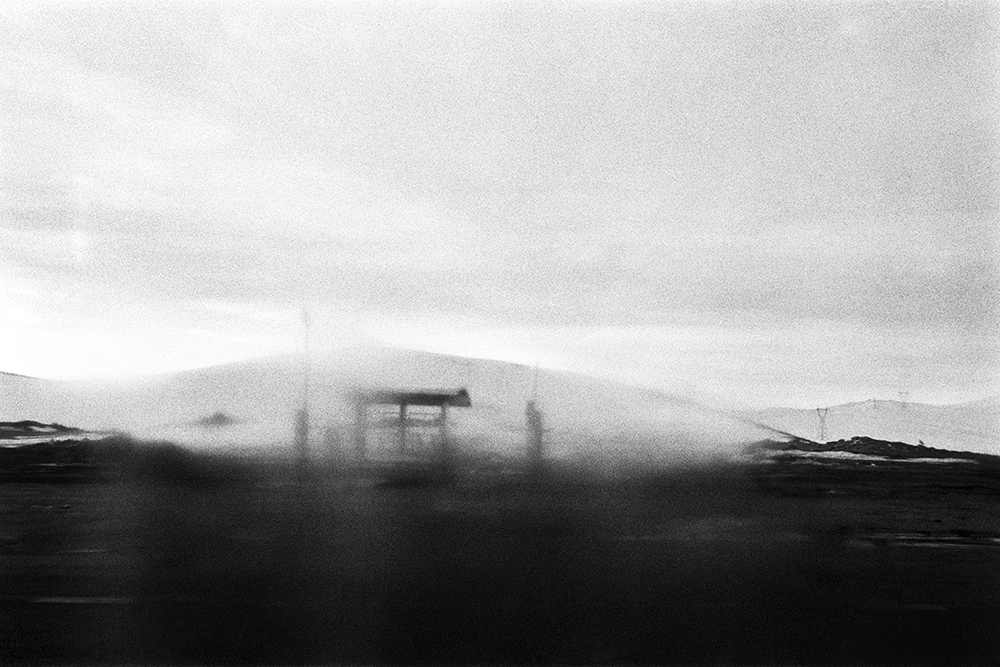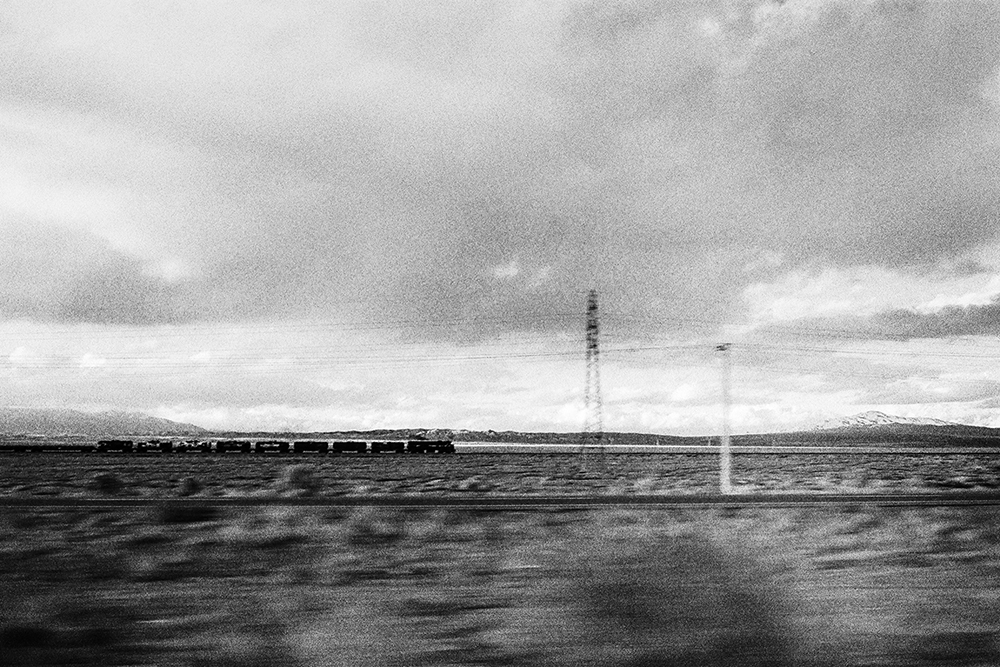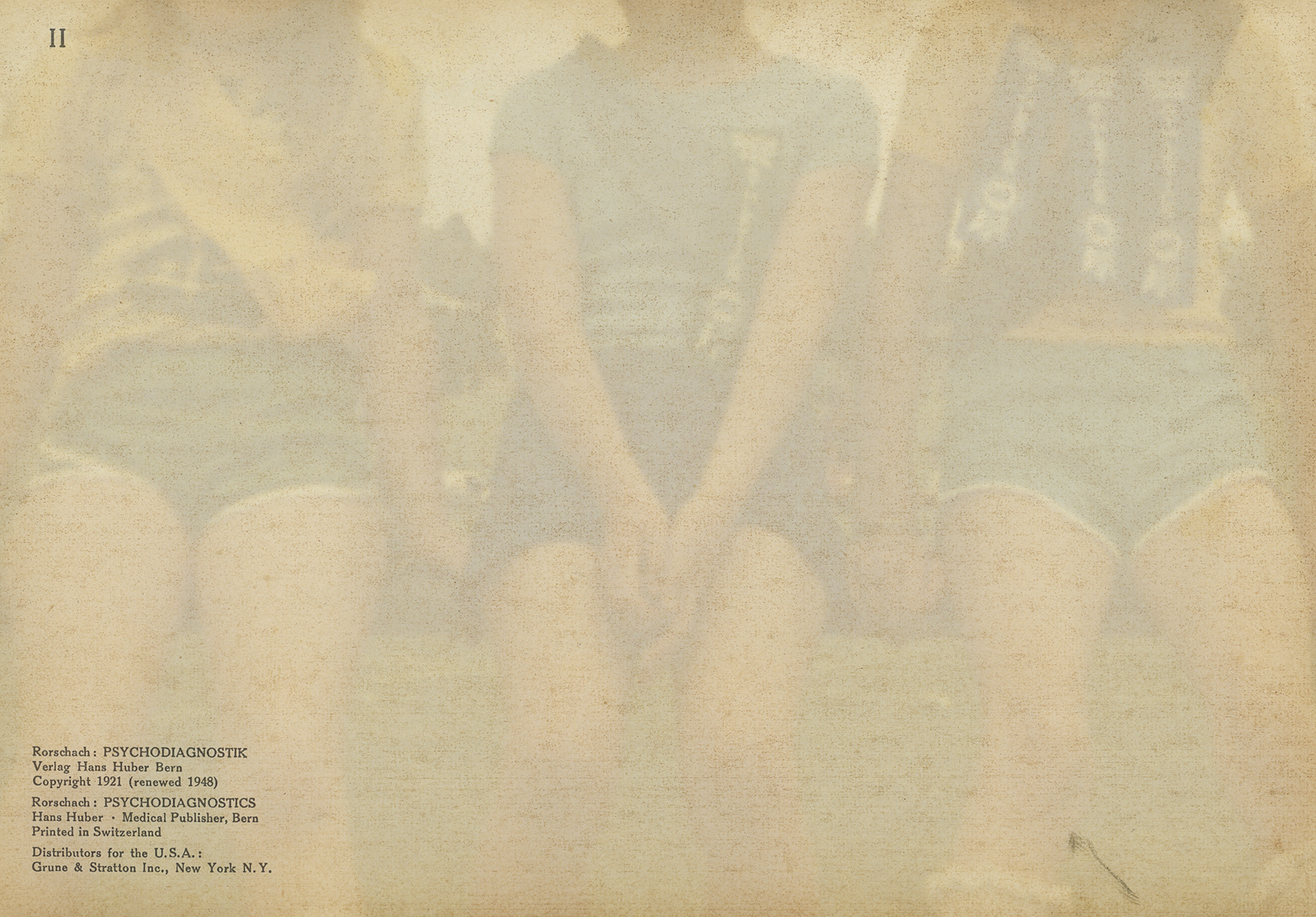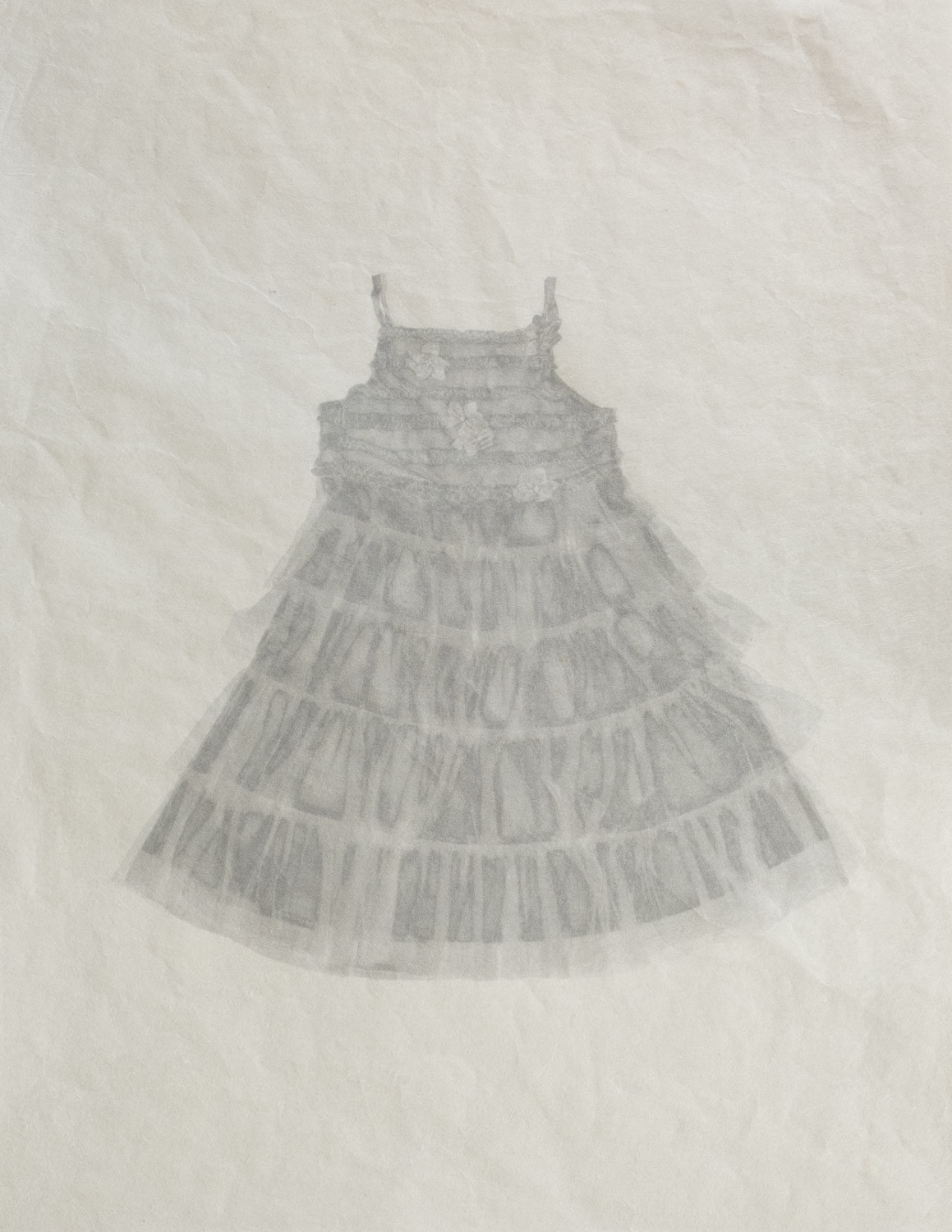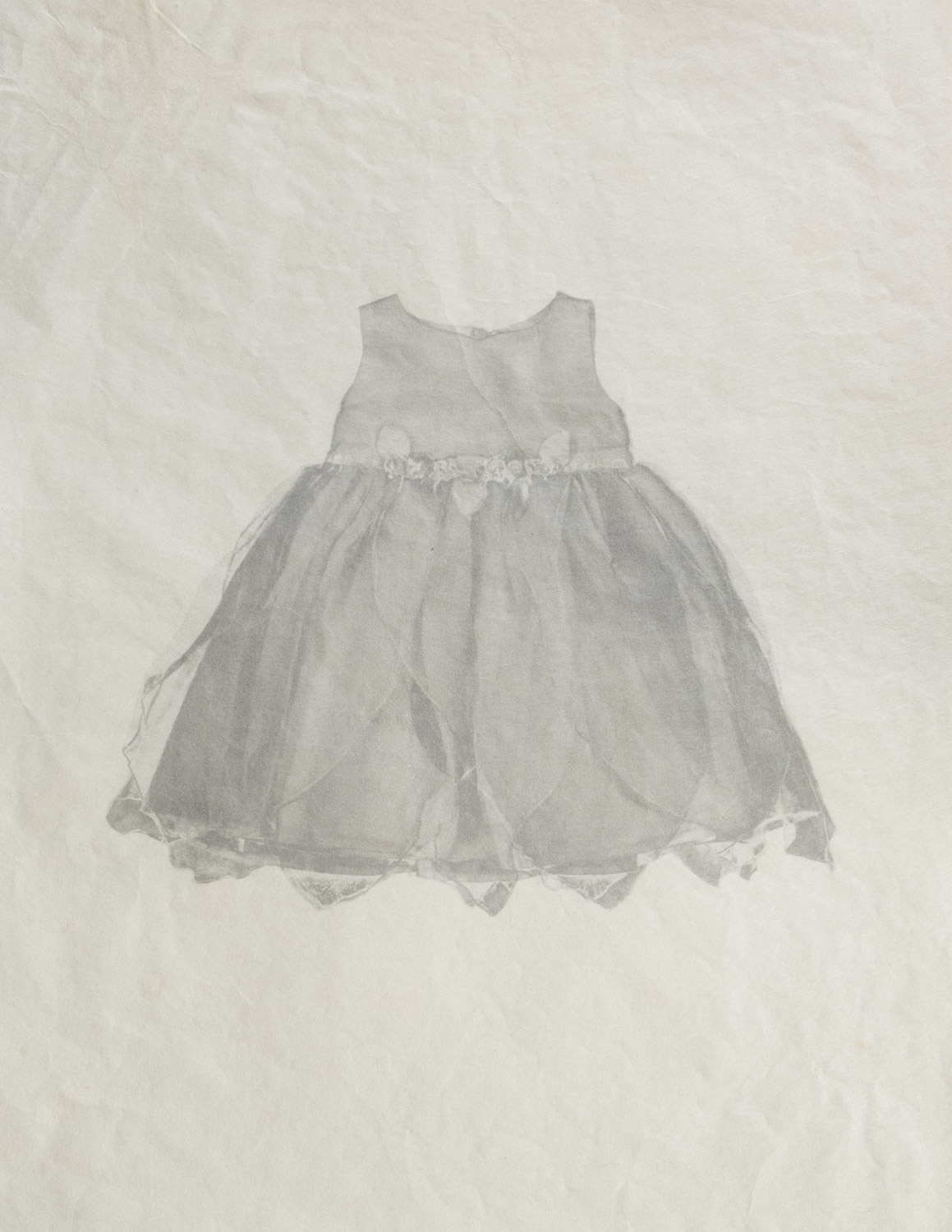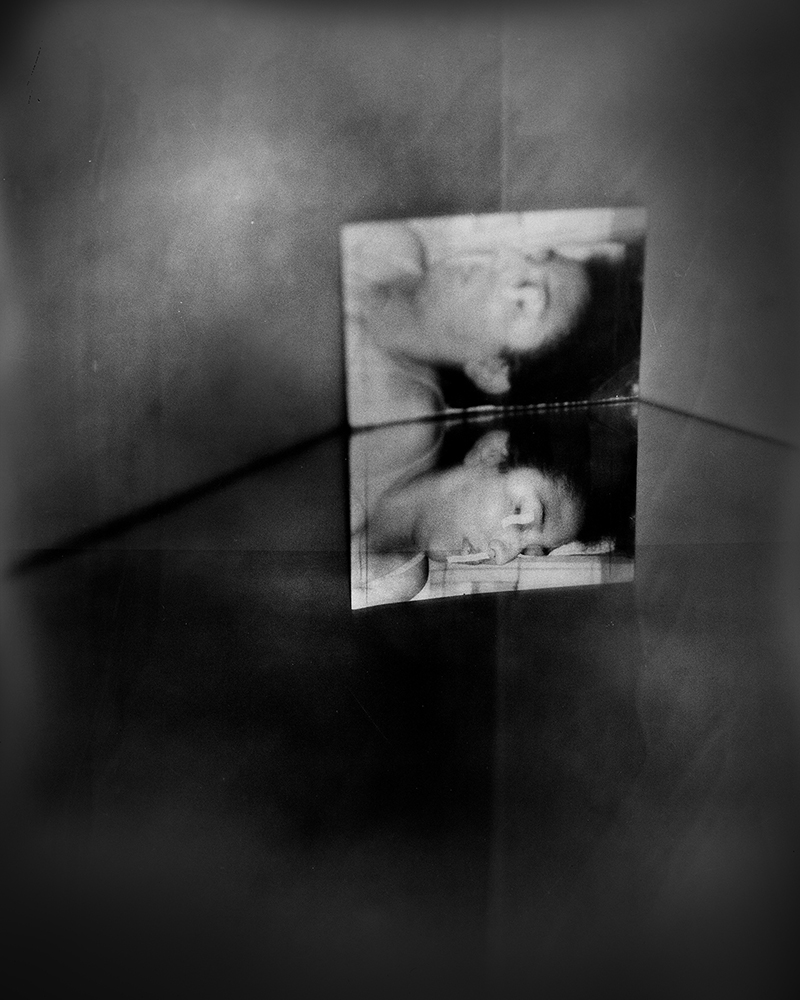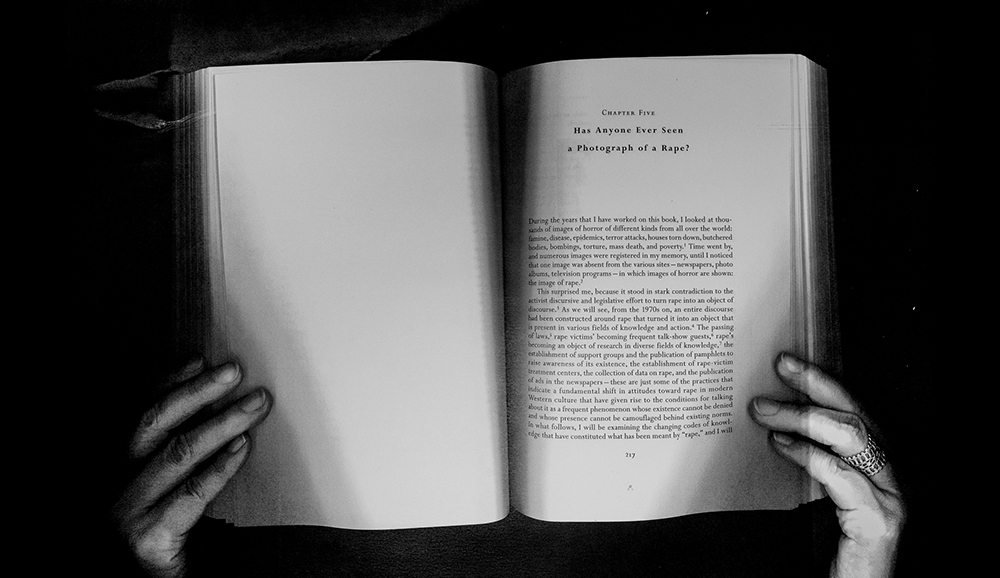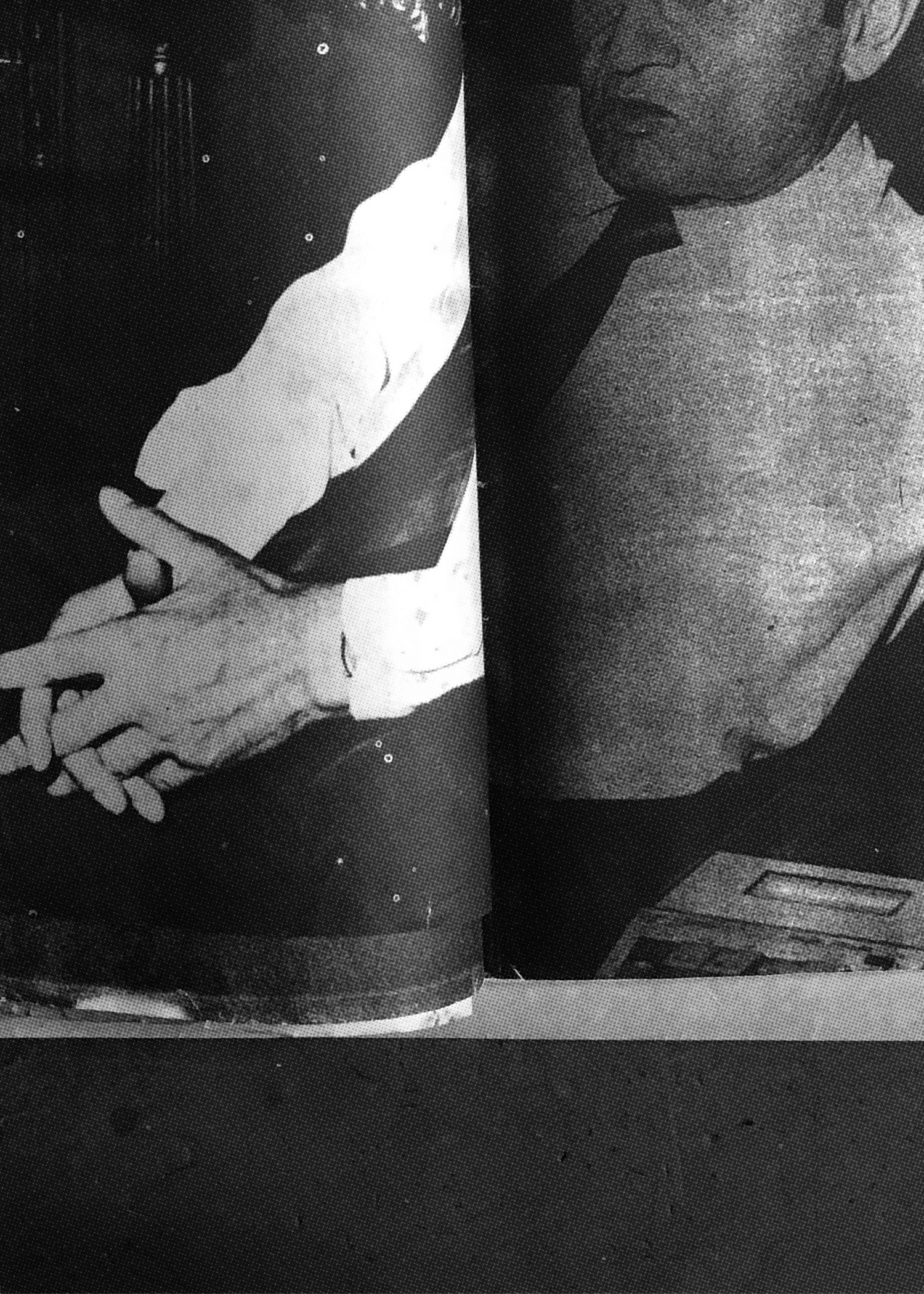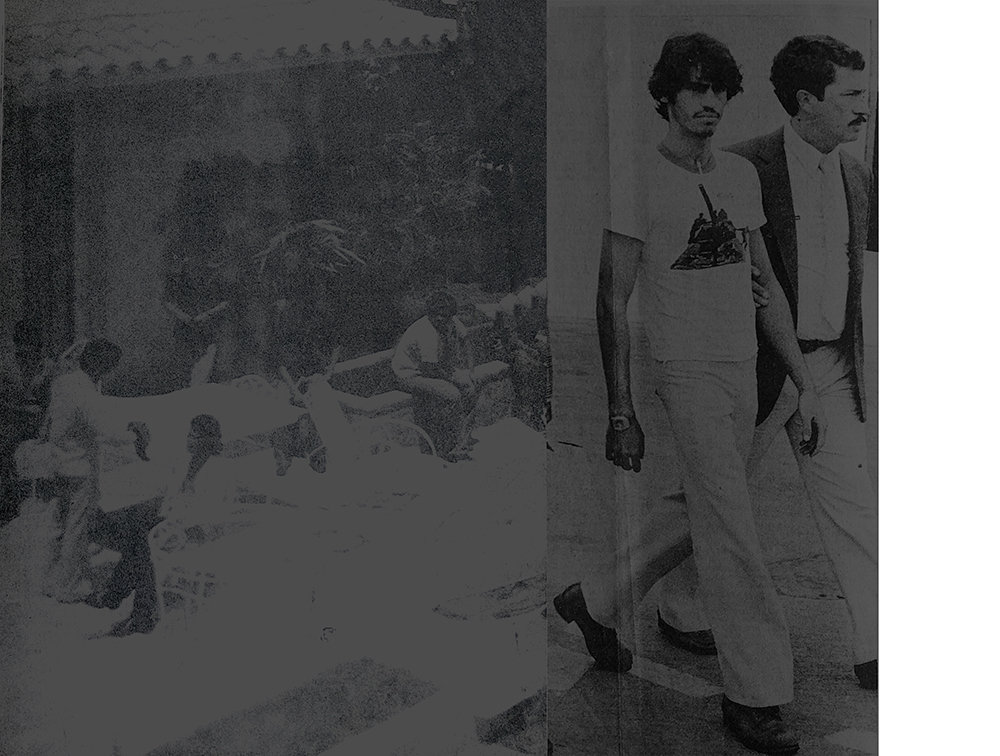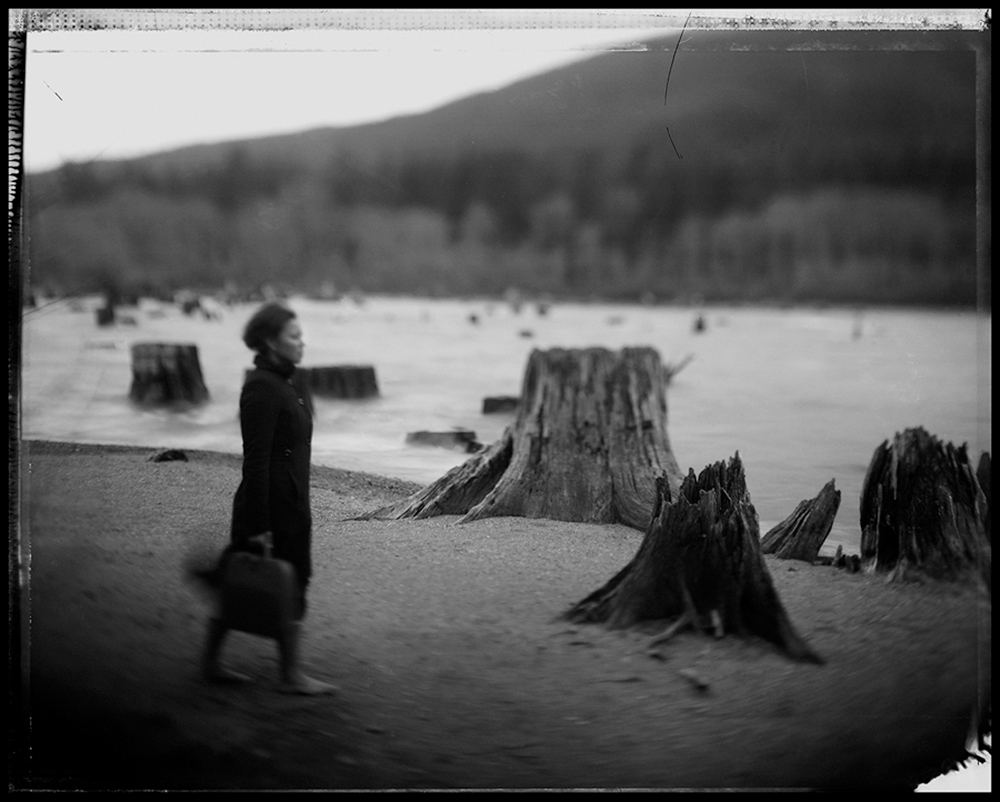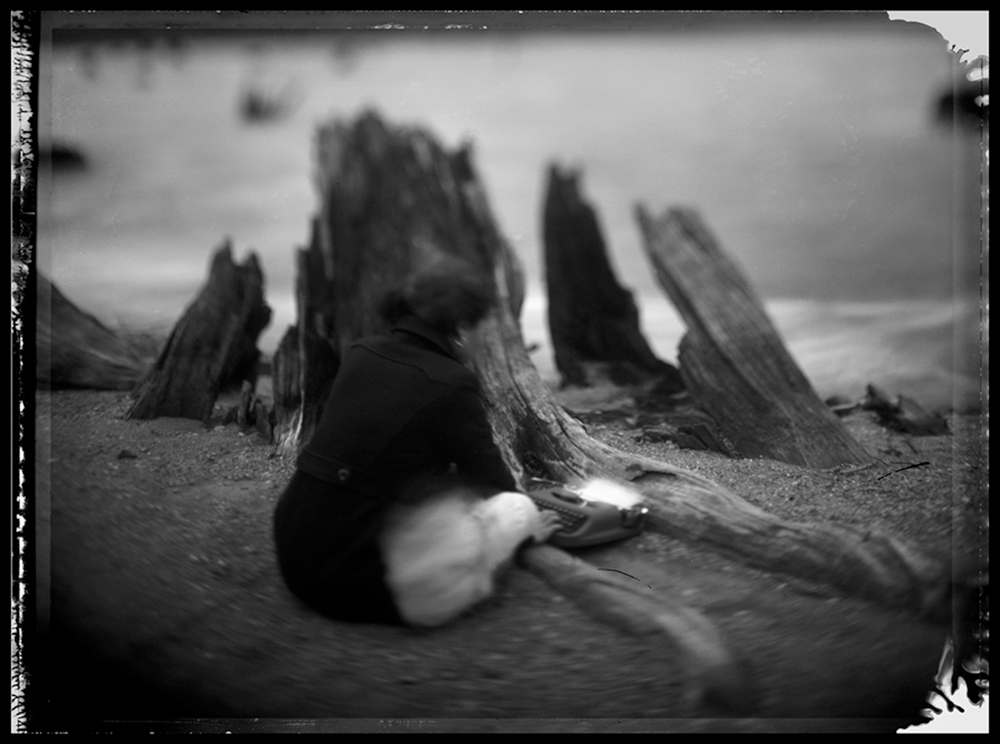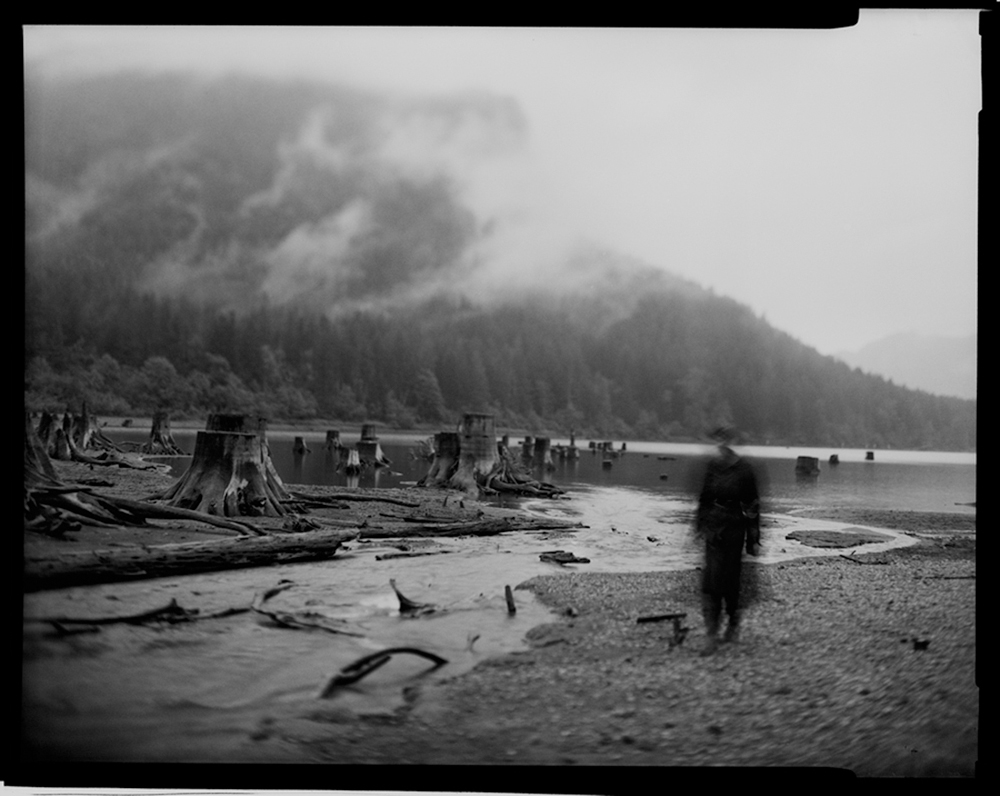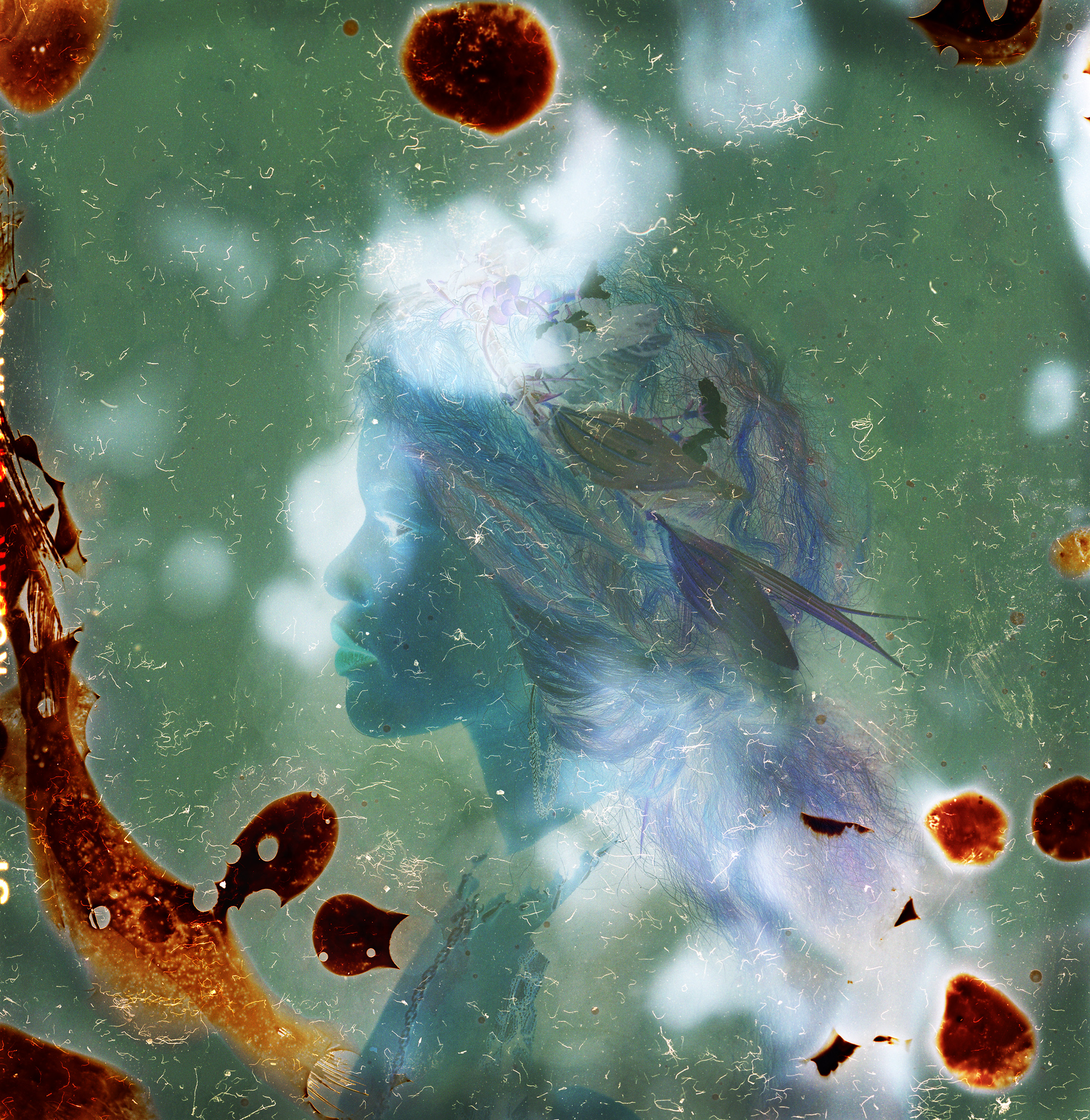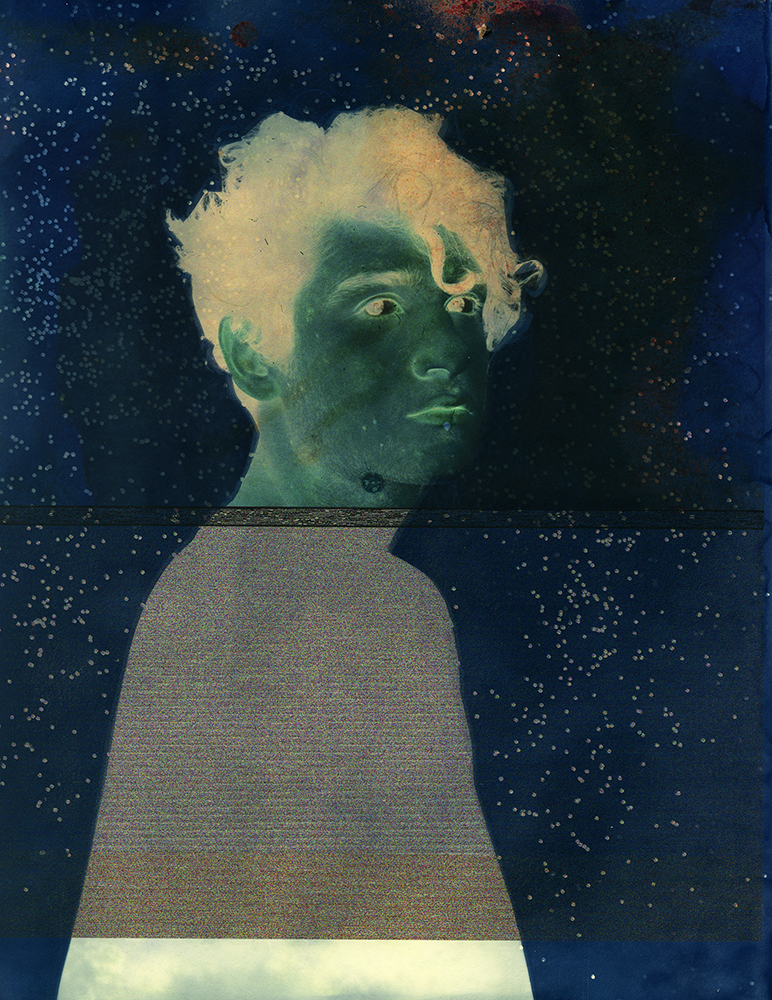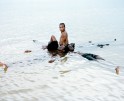It’s Negative Exhibition at MiM Gallery
On Saturday, April 10th, 2021, a new exhibition, It’s NEGATIVE, opens at MiM Gallery in Los Angeles, running through May 29th. Curated by artist Labkhand Olfatmanesh it features work by artists by Alex Turner, Aline Smithson, Jonas Yip, Odette England, Rafael Soldi, Tarrah Krajnak, Tomiko Jones, and Tooraj Khamenehzadeh. There will be an in-person opening on April 10, 2-6pm (In person-covid safe), and a Mid Run Conversation: April 25, 2 pm via Zoom — conversation and it will be recorded, and a closing on Saturday, May 29, 2pm-7, in person-covid safe.
Curator Labkhand Olfatmanesh shares her thoughts behind the exhibition:
Many of the earliest images are negatives. Fossil imprints on sedimented rock, prehistoric handprints in the caves at Lascaux, and the Shroud of Turin are all examples of pre-photographic negative images that have shaped our awareness.
Negative images record absences. In fact, many have argued that all images do this. In Plato’s allegory of the cave, people confined to a cave know the world only from the shadows it casts on the wall. They take these shadows for reality and prefer to stay in the cave because the truth of the world outside hurts their eyes and escapes their understanding.
Now more than ever we live in a world of shadows and negatives, that is, in screens and absences. And yet as images proliferate in the world and in our minds, they have begun to not only reflect but to shape the real. As Susan Sontag notes “the force of photographic images comes from their being material realities in their own right, richly informative deposits left in the wake of whatever emitted them, potent means for turning the tables on reality–for turning it into a shadow.” In other words, the distinction between negative and positive images, between shadows and the real, is breaking down.
The artists in this exhibition forge negative pathways to beautiful realities and difficult truths: Tooraj Khamenehzadeh and Alex Turner create spectral images of political and cultural borderlands; Tarrah Krajnak and Rafael Soldi wrest memory and counter-histories from forgotten and suppressed archives; Odette England and Jonas Yip explore family images as sites of remembrance and projection; and Tomiko Jones and Aline Smithson use historical processes to renew our perception of people and places. Negative images can lead to positive outcomes, the artworks in this exhibition suggest, and vice versa.
Blind River (2018-)
Seasonal rainfall carves washes through the borderlands of the Sonoran Desert. Rains end and water evaporates, yet these channels occupy strata both visible and invisible. Currents often rearrange themselves and flow below ground, less susceptible to the seasonal changes above. Humans and wildlife move through this region in much the same way, forming a complex network of fluctuating corridors across two countries. Political, economic, and environmental forces require them to adapt; their movements are fleeting, varied, and mostly hidden. These systems of transit are subject to constant observation and analysis. Individuals and groups, including scientists and government agencies, study them remotely. Their intentions vary greatly, yet their tactics and data sets often overlap and mirror each other. Merging imagery from their technologies with highly resolved landscape photographs, I collapse intimate and distanced depictions of the border landscape. A new, more comprehensive framework for understanding concealed movement emerges, suggesting a continuous circulation just beyond our unaided vision.
Remote-sensing and recognition applications, whether deployed for research or surveillance purposes, monitor similar spaces, capture similar footage, and analyze data using similar algorithmic tools. Their deployers observe and compile narrow information sets consistent with their motives. In many cases, human vision and recognition becomes secondary: the watcher (camera system) informs the identifier (software) autonomously. Despite these tools of enhanced vision, our capacity to see and understand is clouded by layers of detachment. Does dehumanized observation generate an impassive and simplified lens through which to view this complex and contested space? Is there room for empathy in a system that promotes objectivity? I examine these concerns and encourage viewers to consider subjects and scenes beyond their assigned taxonomies and flattened narratives.
Still, the machine eye watches and collects. In the endless accumulation of footage, patterns emerge and individual moments dissolve. The current reveals our presence and our marks, either ephemeral or enduring. – Alex Turner
Alex Turner (b. Chicago, Illinois) combines imaging technologies to highlight sociopolitical and environmental concerns along the U.S./Mexico border. He was awarded the University of Arizona Carson Scholarship and N-Gen Sonoran Desert Researchers Grant for his interdisciplinary research and artwork. In 2020 he won First Place in LensCulture’s Black and White Awards, was named to Photolucida’s Critical Mass Top 50, received SPE’s Innovation in Imaging Award and was a finalist for both the Bird in Flight Prize and Lucie Foundation Scholarship. His work has been exhibited internationally and featured in publications including Lenscratch, Fisheye, Der Greif, Fraction, Tique, C41 and Terrain. He holds an MFA from the University of Arizona and currently lives in Los Angeles, California.
Cold Silence
My personal interest in Eastern wisdom and Mysticism led me to study and research it at some periods of my life. I took these photographs on the roads of my various trips to the desert areas of Iran, where the influential Iranian mystics in previous centuries lived and meditated. Benefiting from the concept of process by using film photography technique and breath vapor effect on the lens has a metaphor for the personal complexity and ambiguity of the research path and tries to express my inner feelings of that time. – Tooraj Khamenehzadeh
Tooraj Khamenehzadeh started his artistic practice in theater and then shifted to photography and video art. Today, photography, image-based projects, and sometimes the utilization of his theater background comprise the central part of his works. Born and raised in a region where Eastern Philosophy prevails, drew him towards the study and research mysticism. Like Tarighat for a mystic —mystic’s spiritual pilgrimage— he deals with art and producing artworks as a way of exploration, intuition, subjective experience, and immediate perception of reality, which is ultimately realized in his body of work.
Khamenehzadeh’s works have been presented in various international festivals, exhibitions, and biennials such as Iran Photo Biennial (Iran), Monnaie de Paris (France), Polyforme Festival (France), Chongqing Photo and Video Biennale (China), International Art Festival (Nepal). His works have also been published in different books and magazines like African Textile Today (UK), PIX (India), Connaissance des Arts (France), and Canvas (UAE). He has also participated in several international artists’ workshops and artist residencies, including Theertha (Sri Lanka), Khoj (India), SaNsA (Ghana), Vasl (Pakistan), and Organhus (China). He received his BS in Computer Engineering from Qazvin Azad University in Iran and his MFA in Photography, Video, and Related Media from School of Visual Arts in New York.
In addition to his activities as an artist, Khamenehzadeh has been on the curatorial and management teams of many arts and cultural projects, including arts exchange programs, artist residencies, exhibitions, and international workshops. He is based in New York.
Self Diagnosis
Self Diagnosis is a part-photographic, part-psychological study of failure. I expose personal snapshots on the back of each of the ten inkblots from the Rorschach inkblot test. The work investigates the consequences of opening myself up to visual interpretation; the exposure of items typically guarded; and the construction of truth versus fiction in the family album. – Odette England
Odette England uses photography, performance, writing, and the archive to explore themes of autobiography, gender, and ritual.England is an Artist-in-Residence at Amherst College in Massachusetts. She is also a resident artist of the Elizabeth Foundation for the Arts Studio Program in New York.
Her work has shown in more than 100 solo, two-person, and group exhibitions worldwide. England has regularly received funding through competitive grants and fellowships. These include the CENTER $5,000 Project Launch Award (2012); two grants – $4,865 and $2,315 – from the Andrew W. Mellon Foundation (2018-2019); and the Anonymous Was a Woman $1,500 Grant (2020), among others.
She has received fellowships to attend residencies in Australia, Greece, Hungary, Iceland, Spain, and the United States including the invitation-only Robert Rauschenberg Foundation residency working with Guggenheim Fellow, Jennifer Garza-Cuen. Radius Books will publish their first collaborative photographic monograph Past Paper // Present Marks including essays by Susan Bright, David Campany, and Nicholas Muellner.
England’s first edited volume Keeper of the Hearth was published by Schilt Publishing in March 2020, with a foreword by Charlotte Cotton. The book is part of England’s Winter Garden Photograph project.
England received a four-year fully-funded Research Training Program Scholarship to complete her PhD at the Australian National University in 2018. She also has an MFA in Photography with Honors from the Rhode Island School of Design and an MA in Communication, Culture and Language from the University of South Australia.
England is a permanent US resident and lives and works in Providence, Rhode Island and New York City. Her work is represented in the US (east coast only) by Klompching Gallery.
The Small Years
My ongoing project The Small Years attempts to encapsulate the feeling as our daughter’s childhood slips away, that subtle sadness and nostalgia of watching as each stage ebbs—each fascinating, frustrating, fabulous stage—and knowing that it’s never coming back. Over time as that feeling fades we revisit things we’ve held onto, trinkets and scrawls, photographs and movies, to remember, and realize once again the fragility and ephemerality and beauty of childhood.
Her Dresses, one series within The Small Years project, features small, delicate prints of my daughter’s childhood dresses, rendered in subtle pale tones that are barely there, on thin, translucent Japanese paper that itself will wrinkle and buckle as it is handled, fragile and faded, like lingering ghosts of childhood memories. – Jonas Yip
Jonas Yip is a fine art photographer and musician based in the Los Angeles area. Born in Princeton, New Jersey to a poet-writer-professor father and an art historian mother, Jonas was raised in a creative environment steeped in art and music, poetry and performance, design and architecture, and plenty of world travel. Yet somehow Jonas became an engineer, building a successful career in Silicon Valley startup companies. Over the years, however, he never stopped pursuing his creative passions: music, design, and photography. Jonas has since left the high-tech world to concentrate exclusively on these smaller, more personalprojects.
Jonas has been honored with numerous photography awards and his work has been exhibited internationally. Jonas has published two books, Somewhere Between (National Taiwan University Press, 2017) and Paris: Dialogues and Meditations (Nanjing University Press, 2008), in collaboration with renowned poet and scholar Wai-lim Yip. An exhibition, “Paris: Dialogue”, featuring photographs and poems excerpted from the books, traveled through Taiwan, China and Hong Kong and was also exhibited at the San Diego Museum of Art. The photographs and poems from that exhibition have been accepted into the permanent collections at the San Diego Museum of Art in San Diego, CA and the National Museum of Chinese Literature in Beijing, China.
El Jardín de Senderos Que Se Bifurcan
Named after a Jorge Luis Borges story by the same title, my work El Jardín de Senderos Que Se Bifurcan explores the process of tracing origins amidst contradictory familial narratives. Indigenous to Peru and born into orphanhood I was adopted into a working-class transracial family from the American coal country. This early experience profoundly shaped my relationship to origins, race, genealogy, ancestral exile, and the way these constructs may be held in the body rather than written into the archive. In this series, I set out not to recover some stable authentic identity hidden by the circumstances of my birth and adoption, but rather to build a psychic history, to imagine lineages, to invent mothers, and to resurrect ancestors in an effort to understand my place within the larger political, social, and historical narratives of my birthplace–Lima, Peru circa 1979.
Tarrah Krajnak was born in Lima, Peru in 1979. She is currently an Associate Professor of Art at Pitzer College in Claremont, CA. Krajnak was awarded the 2020 Dorothea Lange-Paul Taylor Prize by the Center for Documentary Studies for El Jardín De Senderos Que Se Bifurcan . A monograph of the work is forthcoming with DAIS books. Her work Master Rituals is shortlisted for the forthcoming Arles 2021 Louis Roederer Discovery Award. She is a 2020 Lightwork AIR recipient. She has exhibited at as-is Los Angeles, Honor Fraser Gallery, Houston Center for Photography, Filter Photo Chicago, SUR Biennial, Silver Eye Center for Photography, Center for Photography Woodstock, SF Camerawork, Philadelphia Photographic Arts Center, The National Museum of Women in the Arts, Photo Madrid, Photo London, Belfast Photography Festival, and Unseen Amsterdam. Her work has been published in the LA Review of Books, Nueva Luz, and Strange Fire Collective. She received grants from the National Museum of Women in the Arts, and from the Harpo Foundation. Her work has been reviewed in Glasstire, Artforum, and Contemporary Review Los Angeles.
These images are part of new work responding to the 1980 diplomatic crisis at the Peruvian embassy in Havana, Cuba, which inadvertently led to the liberation of nearly 20,000 gay Cubans. In April of 1980 over 10,000 Cubans citizens seeking asylum forced their way into the Peruvian Embassy in Havana. After nearly a month of a humanitarian crisis, and due to global pressure, dictator Fidel Castro was forced to authorize those in the Peruvian Embassy to exit the island through the port of Mariel, 25 miles north of Havana. Being a homosexual was the most heinous crime in Cuba at the time, and Castro announced that anyone else wishing to leave Cuba had to register as a homosexual, deviant, criminal, or otherwise useless to the revolution, and they could exit through the Peruvian Embassy. For gay Cubans who had been persecuted and incarcerated for decades, public admittance to their homosexuality became the surest way to freedom. In all, nearly 125,000 Cubans left, and it is estimated that up to 20,000 were gay.
While my country of birth, Peru, has a long history of homophobia, I am interested in this episode in which the Peruvian government was cornered into becoming a gateway to queer liberation. In 2019 I visited several newspaper and magazine archives in Lima, Perú, to photograph and acquire archival source material, which is now forming into this new body of work. – Rafael Soldi
Rafael Soldi is a Peruvian-born, Seattle-based artist and curator. He holds a BFA in Photography & Curatorial Studies from the Maryland Institute College of Art. His practice centers on how queerness and masculinity intersect with larger topics of our time such as immigration, memory, and loss. He has exhibited internationally at the Frye Art Museum, American University Museum, Griffin Museum of Photography, ClampArt, The Print Center, Museo MATE, Filter Space, and Burrard Arts Foundation, among others. Rafael has received grants and awards from the Magenta Foundation, Puffin Foundation, smART Ventures, Artist Trust, 4Culture, the Seattle Office of Arts & Culture, and Center Santa Fe. He has been awarded residencies at the Vermont Studio Center, PICTURE BERLIN, Oxbow Space, and the Bogliasco Foundation.
His first monograph, Imagined Futures / Futuros Imaginarios (Candor Arts), and CARGAMONTÓN (self-published), were both published in 2020.
His work is in the permanent collections of the Tacoma Art Museum, Frye Art Museum, King County Public Art Collection, and the Pennsylvania Academy of Fine Arts. Rafael’s work has been reviewed on ARTFORUM, The Seattle Times, The Boston Globe, Photograph Magazine, The Seen, Art Nexus, and PDN. He is the co-founder of the Strange Fire Collective, a project dedicated to highlighting work made by women, people of color, and queer and trans artists; and co-curator of the High Wall, a yearly outdoor video projection program that invites immigrant artists and artists working on themes of diaspora and borderlands to intervene the facade of a former immigration center building in the heart of Seattle.
Rattlesnake Lake
A lone figure moves through a place of layered, untold histories. I collected lake water to clear the film, as an invitation of the lake to merge physically into the image. Rattlesnake Lake explores a watershed through the view camera, and is presented as platinotypes–a nineteenth century recipe of platinum and palladium handcoated on paper and exposed to ultraviolet light.
Tomiko Jones’ photography and multidisciplinary installations explore social, cultural and geopolitical transitions in the landscape, and considers the twin crises of too much and too little in the age of climate change. Her current research, These Grand Places, is a socially-engaged investigation of people and place on public land. Her recent project Hatsubon is a memorial exhibition in photography, video and sculpture.
She is the recipient of awards including the 2013 En Foco New Works Fellowship (New York), 4Culture and CityArtists (Seattle), and Pépinières Européennes pour Jeunes Artistes (France). Jones spent three months in residence at Museé Niépce in Chalon-Sur-Saône, France, and in Cassis, France for a project-specific Fellowship at The Camargo Foundation.
Currently Jones is an Assistant Professor at University of Wisconsin-Madison.She received her MFA in Photography with a Certificate in Museum Studies from the University of Arizona, Tucson.
Fugue States
Fugue States, Part 1, speaks to the potential loss of the physical photograph in the next century. We live in the most documented time in history, creating thousands of images for our social media outlets, but very few images will become photographic prints that can be passed down to future generations. This loss of the photograph-as-object, as something tangible to be circulated through the decades, reflects the fading away of specific memories and identities, and the loss of cultural and familial histories in forms that we associate with family preservation.
The photographs created for this series sit in an in-between space of the future and the past, demonstrating the clash between images and materiality, where materiality, unfortunately, seems to be losing ground. For this project, after creating analog portraits of people in my life, I have damaged the emulsion of my negatives, wounding the film stock with a variety of chemicals. I then reinterpret the image in the digital darkroom in the original, negative state where the potential for both the restoration and erasure of memory are present. I am in fact, damaging my own photographic legacy as a way to call attention to this shift from the physical to the visual.
Fugue States, Part 2, is an on-going exploration of the future of photography, in particular, the photographic portrait. This work is derived from personal corrupted files, each totally unique in how the machine damages and reinterprets the pixels. As an analog photographer, rather than let the machine have the last word, I have created cyanotypes using silhouettes from Fugue State Part 1 photographs to conceal and reveal the corruption. By using historical processes to create a physical object, I guarantee that this image will not be lost. This series calls attention to the fact that digital files may not retain their original state, or even exist, in the next century. We are reliant on technology to keep our images intact for future generations and it bears the question, who will maintain our hard drives after we are gone? These are important considerations for our visual histories, as we may be leaving behind imagery that will be reimagined by machines. – Aline Smithson
Aline Smithson is a visual artist, editor, and educator based in Los Angeles, California. She is best known for her conceptual portraiture and a practice that uses humor and pathos to explore the performative potential of photography. Growing up in the shadow of Hollywood, her work is influenced by the elevated unreal. She has exhibited widely including over 40 solo shows at a variety of international institutions and her work has been featured in publications including The New York Times, The New Yorker, and PDN.
Smithson is the Founder and Editor- in-Chief of Lenscratch, a daily journal on photography. In 2012, she received the Rising Star Award through the Griffin Museum of Photography for her contributions to the photographic community and she also received the prestigious Excellence in Teaching Award from CENTER. In 2014 and 2019, Smithson’s work was selected for the Critical Mass Top 50. In 2015, the Magenta Foundation published her first significant monograph, Self & Others: Portrait as Autobiography, and in 2016, the Smithsonian Air and Space Museum commissioned Smithson to create a series of portraits for the upcoming Faces of Our Planet Exhibition. In 2018 and 2019, her work was exhibited in the National Portrait Gallery in London as part of the Taylor Wessing Prize. Kris Graves Projects published her book, LOST II: Los Angeles and included her work in the books, SOLACE and On Death. Her work is also featured in Odette England’s Keeper of the Hearth.
Labkhand Olfatmanesh born in Tehran, Iran, and Los Angeles-based multidisciplinary artist examining themes of feminism, race, isolation and borders in underrepresented communities. She blends fictionalized narratives with documentary techniques, portraiture, and social practice to explore intimacy, humor, psychology and transitory states that bridge one identity with another and how these forces take shape in the United States and her birthplace of Iran.
Labkhand has been exhibited across the US and internationally, including; Photo London U.K.; Rencontres d’Arles, France; Craft Contemporary, Los Angeles; Helm Bakery District in collaboration with the Culver City Arts Foundation; the Los Angeles Municipal Art Gallery; and the Asian Art Museum, San Francisco ; Jamaica Center of Art & Learning, NY ;CICA Museum, South Korea ; 2020 Feminist Border Arts Film Festival, NMSU ;4Culture, Seattle, WA ; The Glass Box Gallery at the University of California, Santa Barbara.
She was also awarded the LensCulture Portrait Awards Jurors’ Pick and received first place at the Los Angeles Center of Photography’s second annual fine art photo competition; second place CAFAM & Farhang Foundation (Focus Iran 3); Foundation for Contemporary Arts Grantee, NYC.
Her work has also been featured by the United Nations, the British Council, and Australian High Commission and in the UNESCO Palace, Lebanon. She is currently a board member at Level Ground organization; Artist in residence in Side street project based on Pasadena and 2021 Active Innovator Leadership program at Art for LA.
Posts on Lenscratch may not be reproduced without the permission of the Lenscratch staff and the photographer.
Recommended
-
Arnold Newman Prize: C. Rose Smith: Scenes of Self: Redressing PatriarchyNovember 24th, 2025
-
The Aline Smithson Next Generation Award: Emilene OrozcoNovember 21st, 2025
-
MATERNAL LEGACIES: OUR MOTHERS OURSELVES EXHIBITIONNovember 20th, 2025
-
Josh Aronson: Florida BoysNovember 1st, 2025
-
Robert Rauschenberg at Gemini G.E.LOctober 18th, 2025





